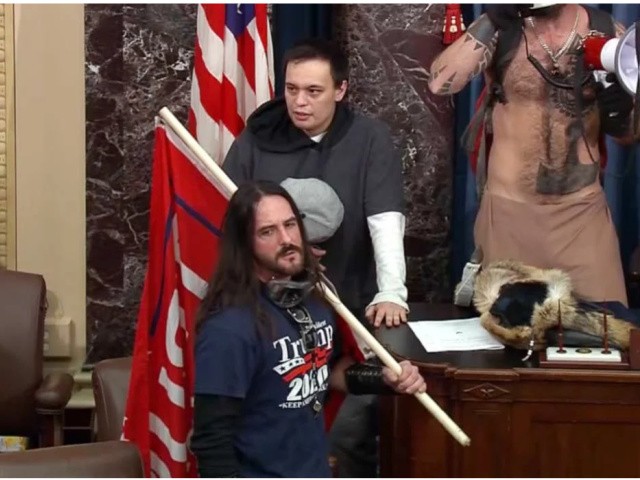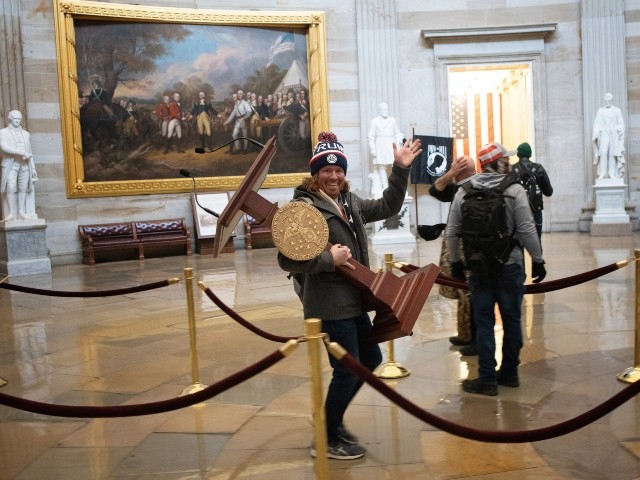Public rejection of “demographic change” fuelled the January 6 “insurrection” in Congress, says the chief author of a study into the rioters’ backgrounds.
But the study declined to consider if the federal government fuelled the rejection of “demographic change” by welcoming economic migration for the last 40 years.
The study by the Chicago Project on Security and Threats looked at 716 individuals who have been charged with crimes in the riot. Chief author Robert Pape described the results in ForeignPolicy.com:
Our national survey shows that the No. 1 belief among insurrectionists—shared by fully 75 percent of respondents—is the “great replacement” of the electorate by the Democratic Party and that this idea is also the most important separator of people in the 21 million [riot sympathizers] from the general population.
The study is a useful effort by social scientists to study the participants at the riot. In contrast, the vast majority of media reports merely chart the riot’s progress on Capitol Hill.
The study reports the backgrounds, ages, education, and homes of the arrested people, saying “the insurrection as a political movement evolved without the leadership of an extreme group and attracted individuals who are not necessarily extremists.”

A “Trump 2020” flag is carried inside the Senate chamber during the Capitol riot on Jan. 6. (FBI image)
But it also suggests that the rioters’ were motivated by a racially-influenced reaction to migration:
Given the overwhelming whiteness of the population of insurrectionists, the finding that counties with higher rates of demographic change are also counties that sent more insurrectionists … is consistent with [emphasis added] a political movement that is partially driven [emphasis added] by racial cleavages and white discontent with diversifying communities.
However, many polls show that opposition to government-directed migration is driven by economics, not race.
Polls show most Americans want to like individual immigrants and immigration-in-general but strongly oppose labor migration.
A wide variety of polls do show deep and broad opposition to blue-collar labor migration and the inflow of temporary contract workers into white-collar jobs sought by young U.S. graduates. This opposition is growing, anti-establishment, multiracial, cross-sex, non-racist, class-based, bipartisan, rational, persistent, and recognizes the solidarity that Americans owe to each other.
For example, the left-wing Equis Research group reported on December 13 that 45 percent of Latinos want to reduce legal immigration:
Pape also tries to shield the federal government from blame for conflict over migration by suggesting the public concern is merely “conspiracy theory“:
Many [of the 716 arrestees] were middle-class professionals motivated by the “great replacement” conspiracy theory … the central idea is that majority white populations are being replaced by minorities and that liberal leaders are deliberately engineering white demographic decline through immigration policy.
“Government policy is changing the population,” responded Mark Krikorian, director of the Center for Immigration Studies.
Conspiracy theorists may claim government leaders met “in a secret lair in the Alps and planned that out,” he laughed, “but the fact that policy is engineering these [demographic] developments is not conspiracy — it’s just a description of reality.”
In 2021, for example, the federal government allowed or invited roughly 1.5 million migrants — or almost one migrant for every two American births in 2020.
The federal government’s migration policies have had a predictably huge impact on the United States for the last 100 years.

Lectern of U.S. Speaker of the House Nancy Pelosi is carried through the Rotunda of the U.S. Capitol Building after a mob stormed the building on January 06, 2021 in Washington, DC. (Win McNamee/Getty)
For example, in 1924, Congress curbed reduced migration, setting the stage for the emergence of a high-trust, high-wage, middle-class society in the 1950s and 1960s.
But since the mid-1980s, the bipartisan federal government has exploited the public’s generosity towards migrants to help extract tens of millions of migrants from poor countries so they can boost U.S. investors and businesses as workers, consumers, and renters.
That economic strategy is harmful to ordinary Americans: It cuts their career opportunities and their wages while it also raises their housing costs. The strategy also curbs Americans’ productivity, damages innovation by professionals, and widens regional wealth gaps.
The mass migration also shrinks Americans’ political influence, radicalizes their democratic, compromise-promoting civic culture, and allows elites to ignore despairing Americans at the bottom of society.
By 2021, a consensus of 77 percent of Americans said the nation’s society and culture were decaying, and only 10 percent believed the nation was improving, according to a January 6 poll by the Trafalgar Group.

COMMENTS
Please let us know if you're having issues with commenting.